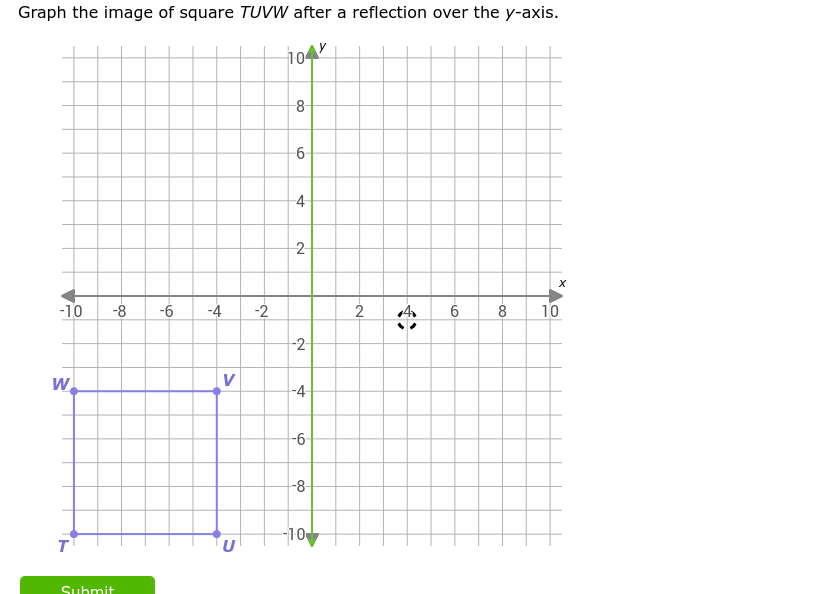Graph the image of square TUVW after a reflection over the y-axis.

Understand the Problem
The question is asking for the graph of a square after it has been reflected over the y-axis. This involves determining the new coordinates of the vertices of the square based on the reflection rule for points across the y-axis.
Answer
The reflected square has vertices $T'(4, -4)$, $U'(4, -6)$, $V'(2, -4)$, and $W'(2, -6)$.
Answer for screen readers
The coordinates of the reflected square $T'U'V'W'$ are:
- $T'(4, -4)$
- $U'(4, -6)$
- $V'(2, -4)$
- $W'(2, -6)$
Steps to Solve
- Identify the coordinates of the original square vertices
Let's assume the square $TUVW$ has the following coordinates:
- $T(-4, -4)$
- $U(-4, -6)$
- $V(-2, -4)$
- $W(-2, -6)$
- Apply the reflection rule over the y-axis
In reflection across the y-axis, the x-coordinate changes sign while the y-coordinate remains the same.
For our vertices, the new coordinates will be:
- $T'$ will be $(4, -4)$
- $U'$ will be $(4, -6)$
- $V'$ will be $(2, -4)$
- $W'$ will be $(2, -6)$
- Plot the new vertices on the graph
Plot the new coordinates:
- $T'(4, -4)$
- $U'(4, -6)$
- $V'(2, -4)$
- $W'(2, -6)$
- Draw the square
Connect the points $T'$, $U'$, $V'$, and $W'$ to complete the graph of the reflected square.
The coordinates of the reflected square $T'U'V'W'$ are:
- $T'(4, -4)$
- $U'(4, -6)$
- $V'(2, -4)$
- $W'(2, -6)$
More Information
Reflecting a figure over the y-axis allows us to visualize symmetry. The resulting shape maintains the same dimensions and orientation but is positioned symmetrically relative to the y-axis.
Tips
null
AI-generated content may contain errors. Please verify critical information